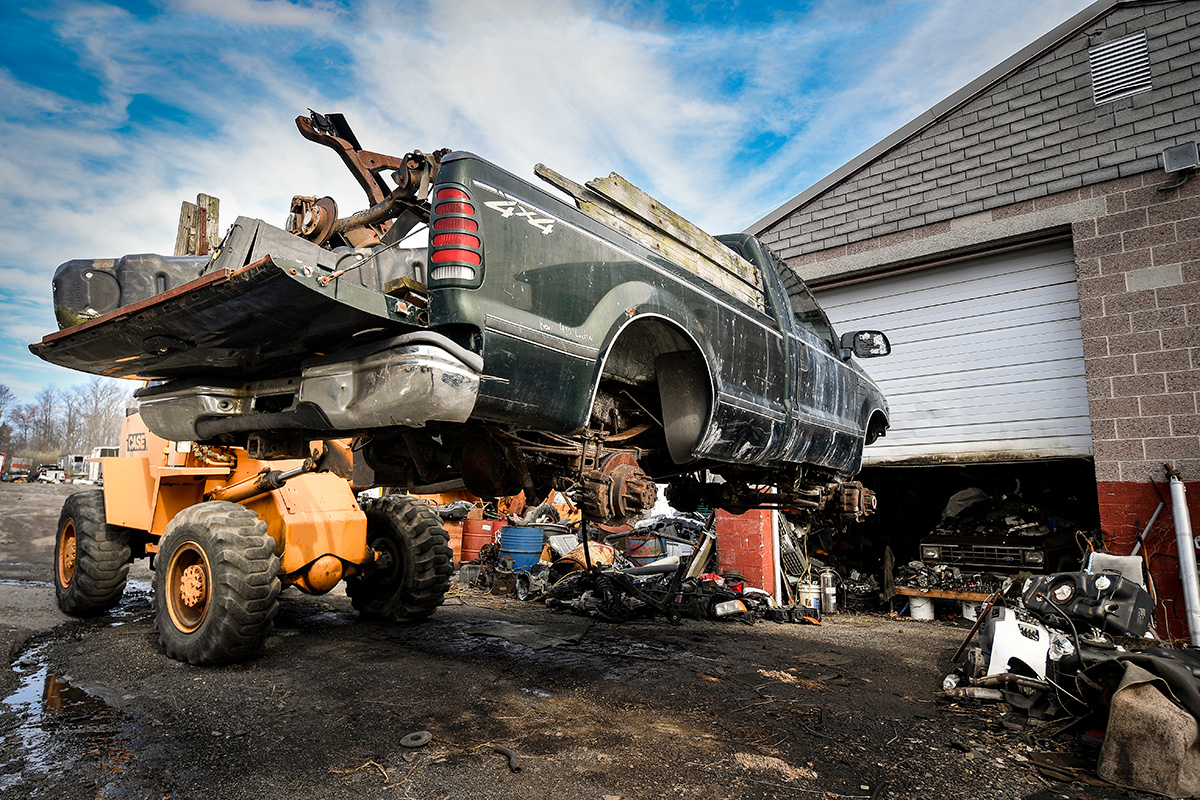Using your shop’s Cost of Doing Business (CODB) as a baseline for labor rates.

For some folks it’s fishing. For others it’s golf. But when I feel like dropping off the grid for a couple hours of “me” time, I head out for a walk in the park—in the junkyard. Actually let me clarify that, because not all junkyards are the kind of junkyard where I take refuge. I have certain standards, and they’re remarkably low.
There are those auto salvage yards that deal only in complete vehicles, usually wrecks or theft recoveries that have been written off by the insurance companies and can often be professionally rebuilt—or hacked back together—and put back on the road. CoPart is perhaps the most obvious example, auctioning off vehicles to licensed dealers and the general public alike.

Then there are the commercial scrap yards. These guys take in wrecked, worn-out, or otherwise unroadworthy vehicles to sell the still-usable bits and pieces to either repair shops or shade tree mechanics. Some of these operations are very sophisticated, dealing in systematic disassembly, component testing, and inventory management so buyers can walk in, collect their used part or assembly, and leave with it in short order. They’re great for people who know what they want and are in a hurry.
But my favorite kind of junkyard is the old school, self-service variety. U-Pull-It. Pick-a-Part. Pull-a-Part. Pick-n-Pull. Whatever you call it, it’s the kind where you pay an entry fee (usually just a couple bucks) to walk the yard, see what’s still around, and use your own hands to extract it, because they aren’t in the business of dismantling old hulks so you can get a $20 alternator.
The inventory system? Usually little more than “domestics to the left, imports to the right, trucks and vans along the back fence.”
Looking for a specific year and model? “Uh, yeah, I think we had one of them last week. Probably still out there. Good luck, buddy.”
Simply put, the Pick-a-Part yard is the lowest common denominator in the automotive recycling world. You find your part; you do the dirty work. Making the most of your visit requires a high degree of grit, a good set of picking tools, and a heaping amount of patience. The experience is not for the casual shopper.
The conditions alone will test the mettle of most DIYers, starting with the inventory situation. Assuming the yard even has some variation of the model you need to scavenge, you have to first find it. When you do, it may be positioned precariously on top of or beneath one or more other vehicles—whichever position is invariably least convenient for the part you’re hunting. My favorite yards are the ones that rest their stock on improvised jack stands fabbed from decades-old steel wheels found on site.

As if the risk of teetering wrecks weren’t enough, countless other hazards abound at every turn. Broken glass? Yeah, it’s everywhere. Sharp, rusty metal where you least expect it? Hope you’re current on your tetanus booster. Biohazards? Abundant. And keep an eye out for the lift trucks actively hauling new cars in and snagging picked-over carcasses away while you work, because the driver probably isn’t looking out for you.
You can always tell the regulars; they arrive prepared. Leather work gloves, broken-in Carhartt overalls, large cardboard box flattened for working on the ground. A good junkyard tool set is also essential, and these usually fall into two camps: the guys with wagons or carts, and those of us with tool rolls or toolboxes.
The wagon guys aren’t messing around. They’ve come for the kill, and they have the means to tackle whatever gets in their way. The wagon’s not only a convenient way to haul around a full assortment of hand and power tools, it’s also the perfect way to bring in big equipment. I’ve seen guys roll in with oxyacetylene torches for cutting whole assemblies off, or generators and air compressors for more surgical removals.

Toolboxes are popular but bulky. I’m a tool roll guy. My black vinyl roll is impervious to the worst yard conditions, easy for the counter guys to inspect, and compact, equipped with only the tools needed for whatever I’m picking that day. Metric wrenches, sockets, Torx drivers, and good screwdrivers for precision work in my case, plus an assortment of adjustable wrenches, pry bars, and a good hammer should things get ugly. Over time, I’ve added a set of sharp side cutters and a small can of WD-40. If I need something that requires a wagon, I’m buying it from a trusted source.
The etiquette of the yard is unwritten but almost universally understood. Do no more damage than required to get what you need. One guy’s trash is another one’s treasure, after all. Lend a helping hand when you can, and don’t be precious about sharing your tools with a fellow picker in need (just don’t let it out of your sight). And yeah, if you paid a cover charge to get in, the operator expects you’re throwing some odd small hardware in your pocket. Just don’t get greedy.
But I have to confess, my best days at the Pick-a-Part are the ones where I don’t need anything at all. The ones where I show up just for the thrill of the hunt. Sure, I may arrive on some sort of thinly veiled mission, but when I turn myself free to explore, I find inspiration in the joy of discovery.
It’s my kind of therapy.
The articles and other content contained on this site may contain links to third party websites. By clicking them, you consent to Dorman’s Website Use Agreement.
Participation in this forum is subject to Dorman’s Website Terms & Conditions. Please read our Comment Policy before commenting.